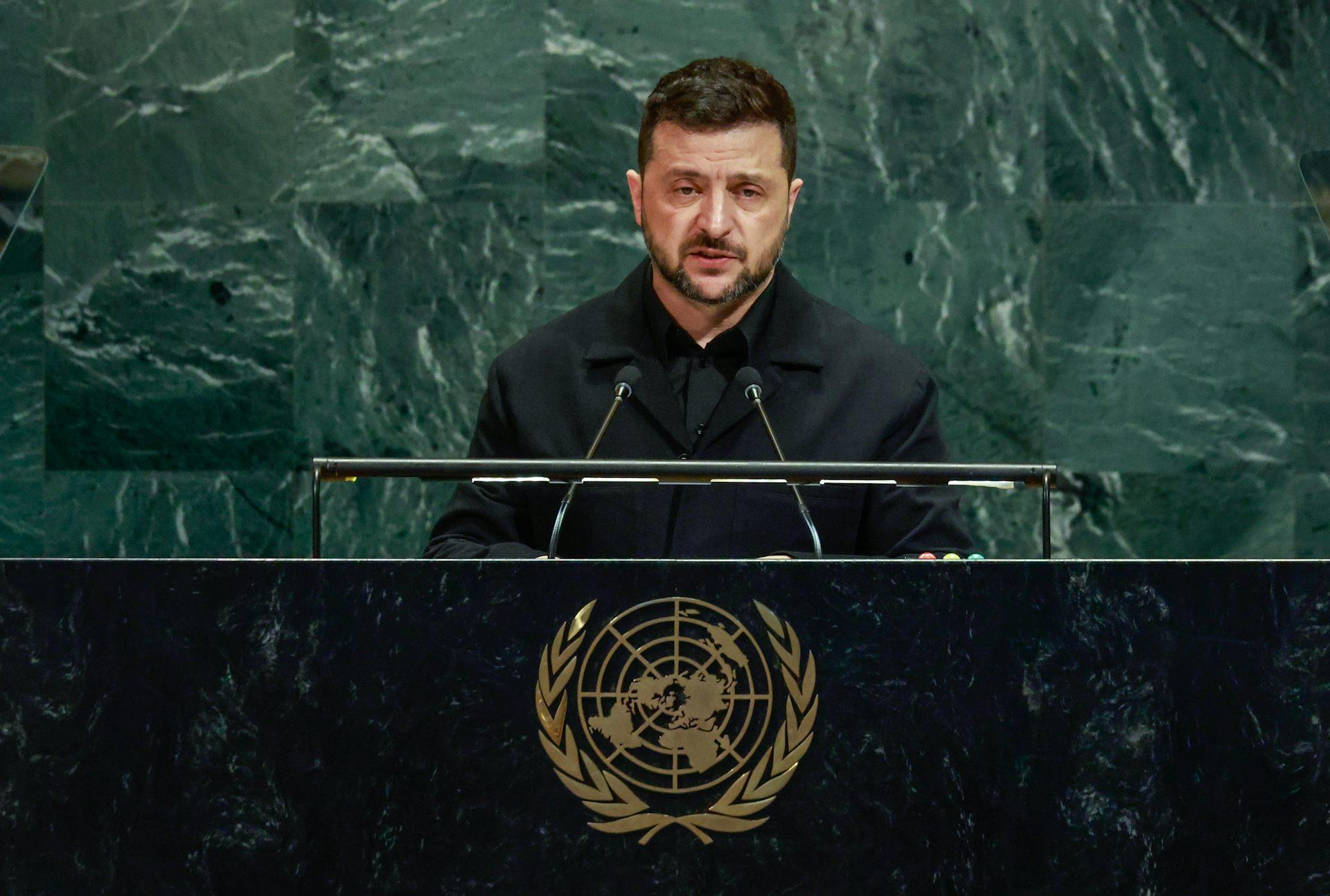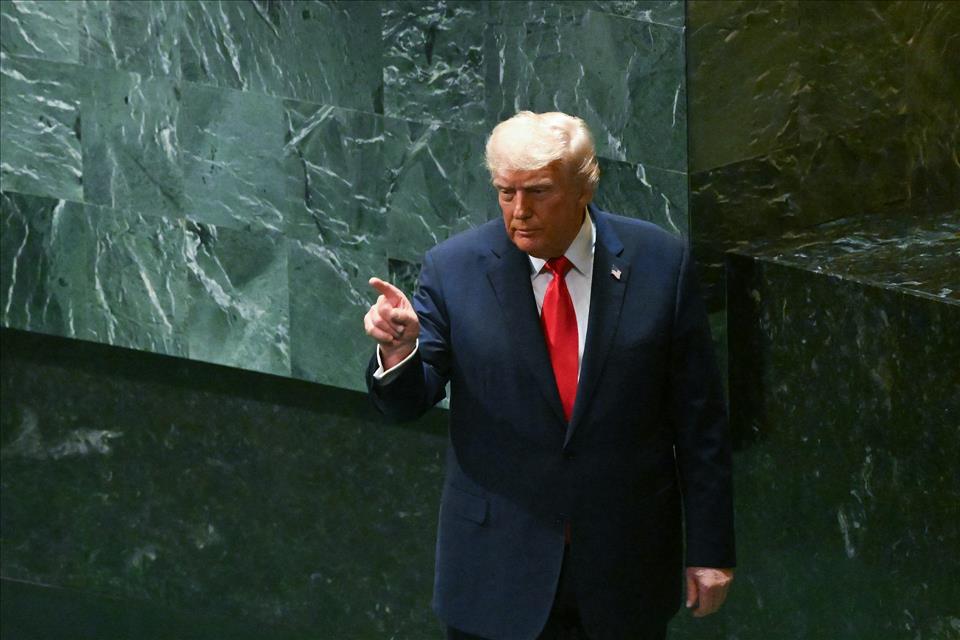
Donald Trump Hints At Leaving Europe To Defend Ukraine Alone
Tuesday was an extraordinary day at the United Nations in New York. Taking the stage to address the general assembly of world leaders, the US president, Donald Trump, told the gathering:“Your countries are going to hell.” In 57 astonishing minutes at the podium, he questioned the purpose of the UN itself which, he said, had offered nothing but“empty words” to solve the many conflicts raging in the world.
Worse, it was“funding an assault on western countries and their borders” via its support for uncontrolled migration. The UN had also, he claimed, fallen for the massive“con job” of climate change.
He saved his choicest accusations for later when he took to his TruthSocial platform to accuse UN staff of deliberately sabotaging an escalator which malfunctioned as he and the first lady were riding it to the assembly chamber and his teleprompter which stopped working as he began his speech.
David Curran researches UN peacekeeping programmes at Coventry University. His impression was that Trump sounded as if he was pitching to replace the UN with a series of US-dominated bilateral relationships, when he offered“the hand of American leadership and friendship to any nation in this assembly that is willing to join us in forging a safer, more prosperous world”.
Curran's main concern, listening to the speech, was that the US president's attitudes could prove contagious.“Trump's perspectives on sovereignty, climate change and migration may embolden other political leaders who want to push similar agendas,” he writes.“It has the danger of going beyond rhetoric.”
Read more: 'Your countries are going to hell': Trump's UN speech explained by an expert
But later, while an astonished world was checking the transcript of his speech to see if they'd heard him right, Trump announced on TruthSocial that:“Ukraine, with the support of the European Union, is in a position to fight and WIN all of Ukraine back in its original form.”
To many people, initially at least, it sounded as if Trump had decided to take a stand on the side of Ukrainian national sovereignty. He'd just been chatting with the Ukrainian president, Volodymyr Zelensky. And it's long been said about the US president that he often repeats the talking points of the last person he has spoken with.
But there was something about the way Trump framed his Truth Social message. Particularly the words“Good luck to all!” with which he signed off. Richard Whitman and Stefan Wolff believe this is a strong hint that the US president is preparing to walk away from the war in Ukraine.
He has signally failed to solve the war“in 24 hours” as he promised on the campaign trail. And for all his talk of how with the help of Nato Kyiv could repel the Russian invader, he committed the US to nothing beyond selling arms to the rest of Nato to give to Ukraine.
This, they believe, leaves Ukraine and the“coalition of the willing” scrambling to develop and fund a coherent defence strategy at a time when – as we've seen in the past few weeks – Russia has been testing Nato's European defence capability with multiple incursions into Nato airspace.
“Europeans also need to keep the US engaged as much as possible, literally by buying Trump off, because they currently lack critical capabilities that will take time for them to develop themselves,” they write.“And while building better defence capabilities for themselves they will need to keep Ukraine in the fight against Russia to keep it from losing the war.”
Read more: Trump looks set to abandon Ukraine peace efforts – Europe must step up to face Russian aggression alone
Dystopian visionZelensky made his own speech to the UN this week. And it made for headlines as stark as those that greeted Trump's UN address the previous day. Zelensky outlined a dystopian vision of the way wars will increasingly be fought, based on what is happening in his country.

Zelensky: 'We are now living through the most destructive arms race in human history.' EPA/Kena Betancur
He spoke of areas“stretching for dozens of kilometres where nothing moves, no vehicles, no life. People used to imagine that [scenario] only after a nuclear strike – now it's [a] drone reality.”
He warned of a coming nightmare marriage of drone technology and artificial intelligence (AI) producing drones operating in autonomous swarms. And he pointed to a world where the capability to build new and more dangerous weapons was no longer something confined to states, but something that would be within the capability of terrorists or criminal groups.
Mark Lacy researches the changing character of war and international politics at Lancaster University. He worries that the world is already seeing increasingly sophisticated tactics to harness developments in technology and worries that the ability to regulate or counter them is lagging behind.
But more worrying still is the increased potential that as leaders such as Putin play with the possibilities of brinkmanship by testing his adversaries' defences in the way he has been doing recently, the idea of a mistake tipping over into open war becomes more possible.
Read more: Zelensky says a destructive drone arms race looms – but dystopia isn't inevitable
Uncertain future for a Palestinian stateIn his UN speech, the US president also had some harsh words to say about the countries that have recently recognised the state of Palestine. It was essentially another stick to beat the UN with, but he heaped all the blame for the conflict on Hamas. Clearly Hamas must bear its share, but Trump had nothing to say about the conduct of the war by the Netanyahu government in Israel.
Whatever Trump says, the recognition of Palestinian statehood, in the past week, by the UK, Canada, Australia, Portugal, France, Belgium, Luxembourg, Malta and Andorra is an important moment, setting up increased moral pressure on Israel and its (diminishing list of) allies.
Nils Mallock of King's College London has been in the region recently, conducting fieldwork on the West Bank. He considers what an independent Palestinian state might look like .
The shrinking map of Palestine. Left: historic borders. Right: settlement expansion in the West Bank. Mallock & Krekel (2025)., Author provided (no reuse)
Mallock and his fellow researchers have mapped the growth of settlements on the West Bank since 2014 and found they have grown by an average of 72%. Not only that, but their number has greatly increased, despite the fact that under the Oslo accords signed by Yitshak Rabin and Yasser Arafat in 1993, these settlements are illegal.
Malloch observes that the West Bank already“resembles a fragmented archipelago more than a cohesive state territory”. Add to this the massive development project which stretches pretty much from East Jerusalem across the width of the Palestinian enclave and an independent state based on the territory becomes difficult to imagine.
As for governance, Malloch believes that the Palestian people's options are unenviable. An ageing and corrupt Palestinian authority on the one hand and what remains of Hamas on the other.“Whoever eventually leads a unified Palestine will inherit decades of failed self-governance, deep public scepticism, and Israel undoubtedly attempting to intervene in this process,” he concludes.
Read more: Geography and politics stand in the way of an independent Palestinian state
Sign up to receive our weekly World Affairs Briefing newsletter from The Conversation UK. Every Thursday we'll bring you expert analysis of the big stories in international relations.

Legal Disclaimer:
MENAFN provides the
information “as is” without warranty of any kind. We do not accept
any responsibility or liability for the accuracy, content, images,
videos, licenses, completeness, legality, or reliability of the information
contained in this article. If you have any complaints or copyright
issues related to this article, kindly contact the provider above.


















Comments
No comment